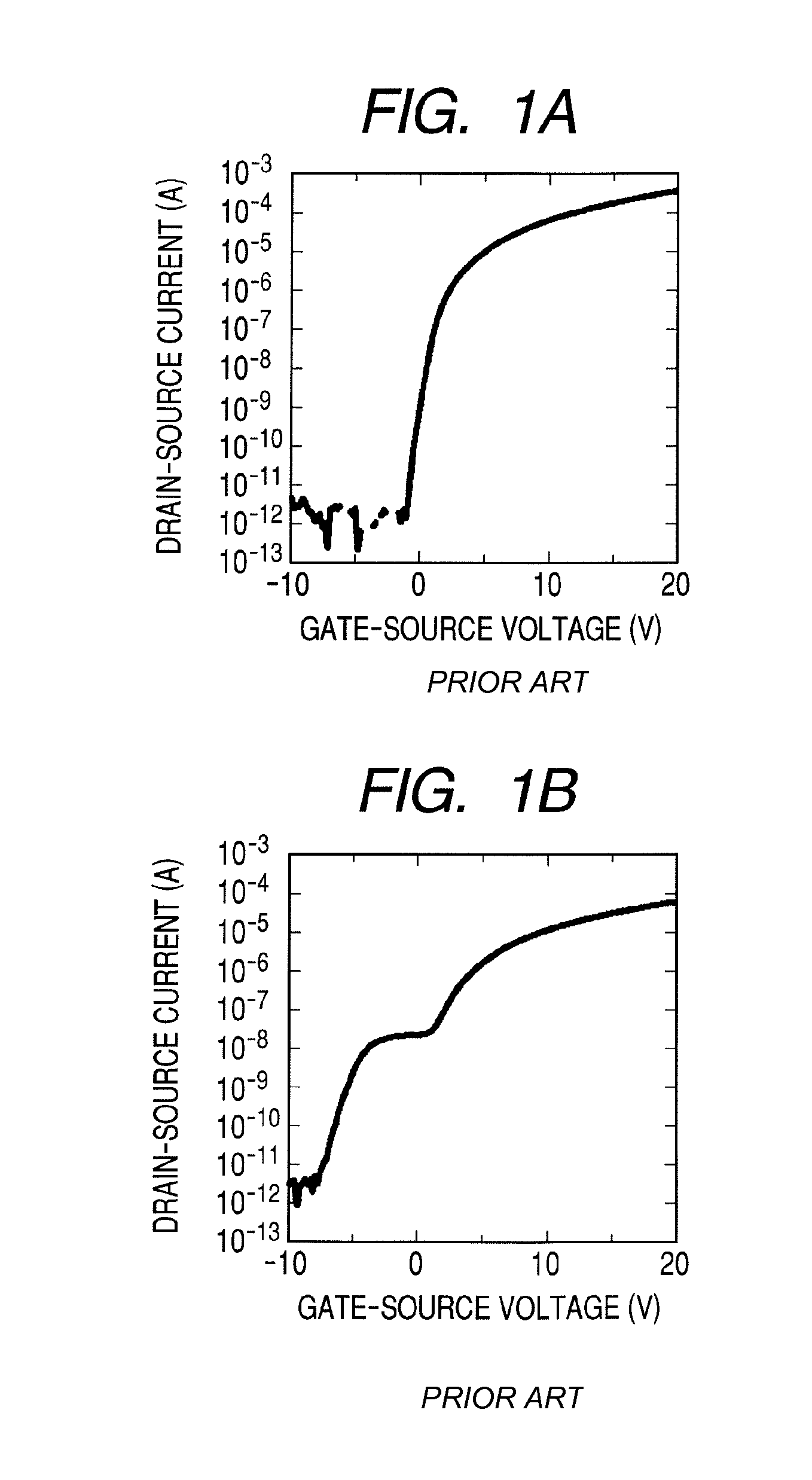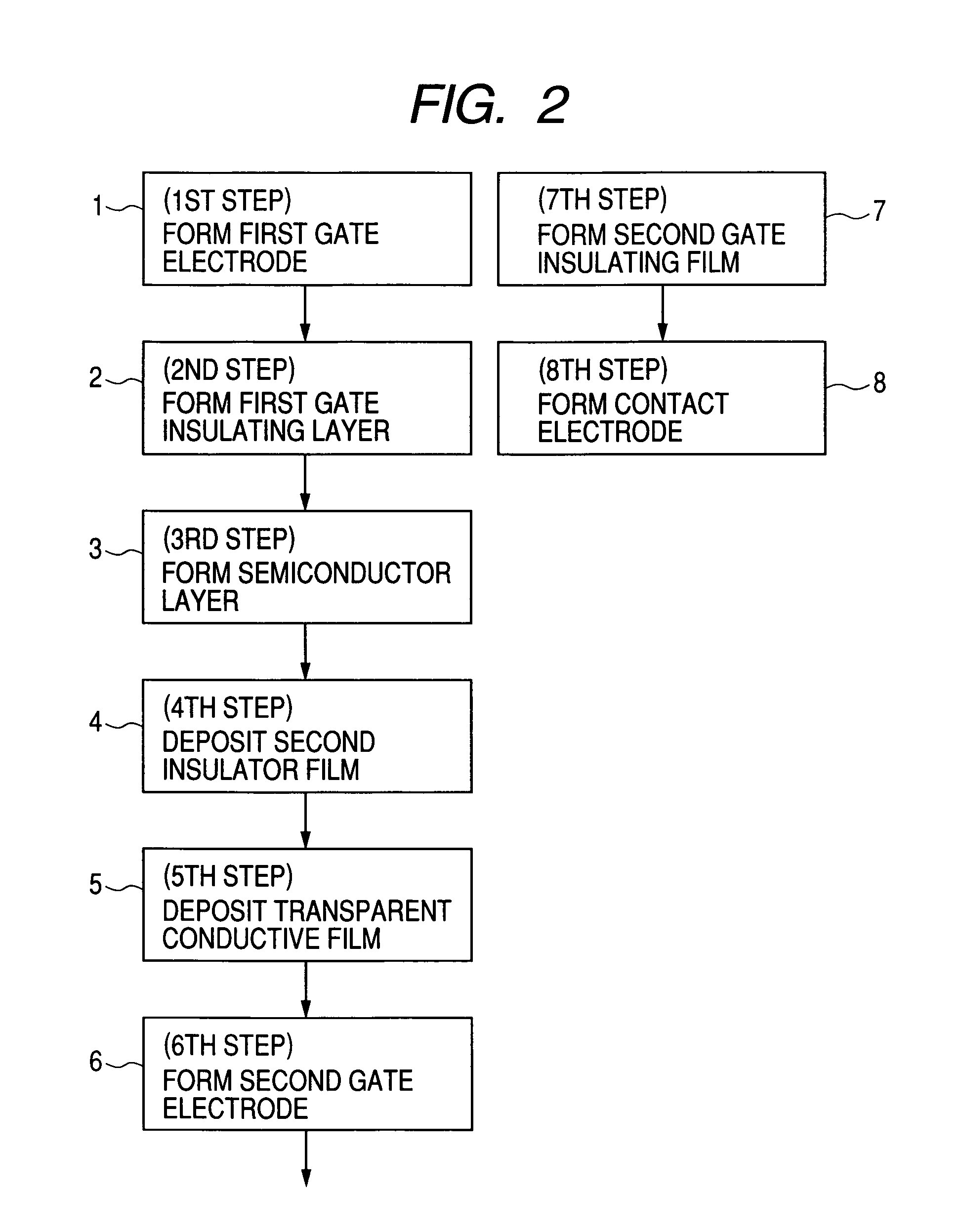Thin film transistor having specified transmittance to light
a technology transmittances, applied in the field of thin film transistors, can solve the problems of different operation of transistors, hump in the transfer characteristics, and inability to obtain desired emission intensity, and achieve the effect of suppressing the occurrence of hump
- Summary
- Abstract
- Description
- Claims
- Application Information
AI Technical Summary
Benefits of technology
Problems solved by technology
Method used
Image
Examples
example 1
[0102]FIG. 7 is a cross-sectional view illustrating the configuration of a thin film transistor according to Example 1 of the present invention. As illustrated in FIG. 7, this example is a bottom-contact type double-gate thin film transistor. The thin film transistor illustrated in FIG. 7 is formed on a substrate 1.
[0103]More specifically, a first gate electrode 2, a first gate insulating layer 3, a drain electrode 5, a source electrode 6, a semiconductor layer 4, a second gate insulating layer 7, and a second gate electrode 8 are formed on the substrate 1.
[0104]A glass substrate (No. 1737 manufactured by Corning Incorporated) is used as the substrate 1. The thickness of the glass substrate is 0.5 mm.
[0105]A Mo thin film is formed on the substrate 1 in the thickness of 50 nm. In this example, DC magnetron sputtering using an atmosphere of an argon gas is used to form the MO thin film.
[0106]Then, the deposited Mo thin film is finely processed by photolithography and dry etching to fo...
example 2
[0127]FIG. 10 is a cross-sectional view illustrating the configuration of a thin film transistor according to Example 2 of the present invention. This example is an example of forming a planar double-gate thin film transistor. The thin film transistor illustrated in FIG. 10 is formed on a substrate 1.
[0128]More specifically, on the substrate 1, there are formed a first gate electrode 2, a first gate insulating layer 3, a semiconductor layer 4, a drain electrode 5, a source electrode 6, a second gate insulating layer 7, a second gate electrode 8, contact electrodes 9, and a protective layer 10.
[0129]A glass substrate (No. 1737 produced by Corning Incorporated) is used as the substrate 1. The thickness of the glass substrate is 0.5 mm.
[0130]First, a Mo thin film is formed on the substrate 1 in a thickness of 50 nm. In this example, DC magnetron sputtering using an atmosphere of argon gas is used to form the Mo thin film.
[0131]Then, the deposited Mo thin film is finely processed by pho...
PUM
 Login to View More
Login to View More Abstract
Description
Claims
Application Information
 Login to View More
Login to View More - R&D
- Intellectual Property
- Life Sciences
- Materials
- Tech Scout
- Unparalleled Data Quality
- Higher Quality Content
- 60% Fewer Hallucinations
Browse by: Latest US Patents, China's latest patents, Technical Efficacy Thesaurus, Application Domain, Technology Topic, Popular Technical Reports.
© 2025 PatSnap. All rights reserved.Legal|Privacy policy|Modern Slavery Act Transparency Statement|Sitemap|About US| Contact US: help@patsnap.com



